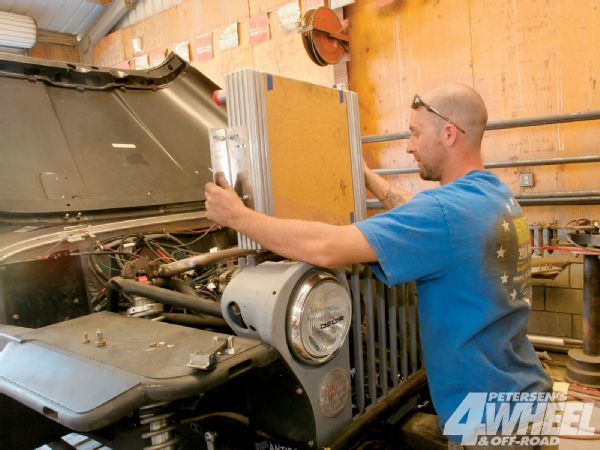
 Kevin McNulty
Former Editor, Mud Life
Kevin McNulty
Former Editor, Mud Life
It might be cool to run an old, rusty, leaking radiator while plugging its leaks with snake oils and Stop Leak, but there's nothing more frustrating and disconcerting than hitting the trails and highways for an adventure with a vehicle that's overheating. Especially when a breakdown might leave you stranded in a remote or dangerous situation! Your overheating rig is a major pain for everyone you're traveling with. Continually having to stop and wait for the engine to cool before you can hit the road again is not only an inconvenience, but prolonged overheating will damage an engine and shorten its life.
 Flex-a-lite manufactures a high-quality aluminum radiator that will provide years of dependable service. The radiators are available for all types of engines and use the company's cross-flow design, which absorb heat and then radiates it through the tank's external fins.
Flex-a-lite manufactures a high-quality aluminum radiator that will provide years of dependable service. The radiators are available for all types of engines and use the company's cross-flow design, which absorb heat and then radiates it through the tank's external fins.
Flex-a-lite manufactures an extensive line of aluminum radiators for just about every type of vehicle, including custom applications. We've had a lot of experience with the company's radiators over the years and have found them to be reliable and easy to install. Flex-a-lite also produces a trick line of electric fans and external coolers that help keep an engine and transmission running cool and reliably. The company offers a one-stop shop and can provide everything needed to help keep a rig's cooling system run at optimal temperatures. Flex-a-lite's radiators are available to fit trucks, Jeeps, and SUVs.
Finishing up the cooling system on our Scratch-Built Scrambler project, we ordered a larger-than-factory radiator that will fit in a Jeep CJ grille and help keep the 5.9L Dodge Magnum engine running cool. The Magnum series of engines has a tendency to run hotter than others, and a spike in temperature could quickly push the powerplant into the danger zone. We've always felt comfortable using Flex-a-lite radiators on our projects and V-8 conversions.
We recruited the guys at Overkill Engineering to help install the cooling system since they have many years of experience in custom engine swaps and builds. With the aluminum radiator bolted in the front of the Scrambler we're sure we won't have any overheating issues, especially while blazing across a hot, dry, remote desert on an adventure.
PhotosView Slideshow






